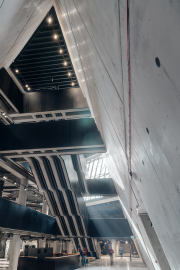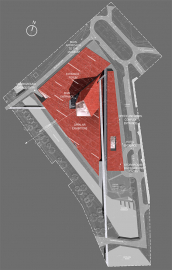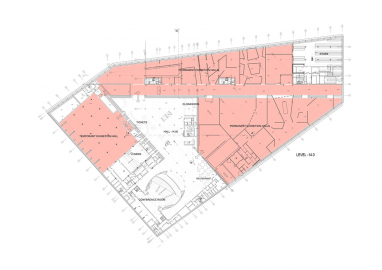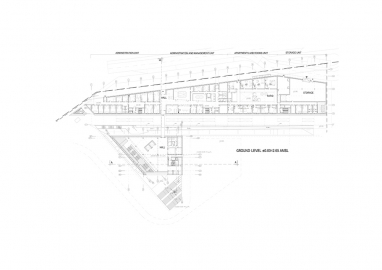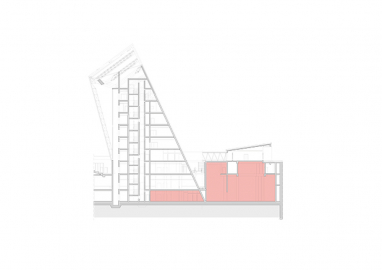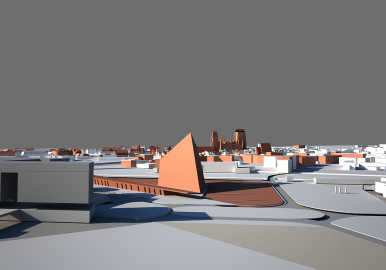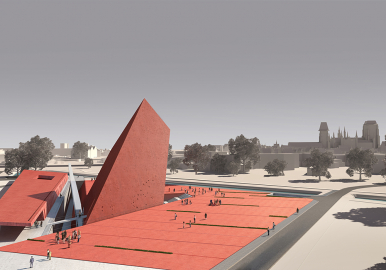MUSEUM OF THE WORLD WAR II
The Design for the Museum of the Second World War bulding in Gdansk was chosen in an international architectural competition. The buildings mission is not only to be a museum but also to serve as an education, culture and research centre.
The Museum of the Second World War is situated by the Radunia Canal in the outskirts of the Old Town in Gdansk. However, it will soon become the core of a modern district that will raise here and replace the shipyard. The plot is located where a district called Wiadrownia - destroyed in 1945 used to be. Its main street “Grossegasse” became the main axis of both museum and exhibition.
The building has a floor area of about 23,000 sqm . The space designed for the permanent exhibition covers around 5,000 sqm and the other 1,000 sqm is reserved for temporary expositions, all of which is located underground, as well as storages, entrance hall, a conference hall and a cinema. The overground is divided into two volumes: the low, long office building and the angled tower which contains a library, offices, lecture halls and a restaurant with a viewpoint of the panorama of Gdansk rebuilt after the war.
The idea behind the concept is quite simple – to place the main part of the museum underground in order not to completely use the small plot. This way, it was possible to find space for a vast square, and the whole premise became symbolic.
The past is locked 14m beneath the ground. Here, a story unfolds about the trauma of war, about human cruelty, treason and hatred, but also a story of heroism¬, sacrifice, courage and love. The square mentioned represents the present, a place where people meet, socialize and relax. Future and hope are symbolized by an expressive 40.5m high tower pointing toward the city and sky.
The entrance to the museum itself contributes to a certain transition: from an initial carefree mood through uncertainty, to reverie, finally to complete silence. The simple sculptural form fits in¬ with image of the city and the geometry of shipyard cranes – the symbol of Gdansk. It creates a new identity for this peripheral location and becomes one of the numerous features that create the landscape of Gdansk: church and city hall towers, ¬ including St. Mary's Basilica, which has permanently set the local colour and texture.
The greatest construction challenge was the building’s foundation. Due to the neighbouring Radunia Canal and Motlawa river, the groundwater level was very high. The amount of concrete had to balance the buoyancy of water. Therefore, the foundation had to be built underwater 24/7 for 7 days. The construction of the underground volume, as well as the overground part, is made of reinforced concrete.
The tower is skewed at a 67-degree angle. The structure itself extends into the underground – effectively making it nine storey high. Three of the tower’s walls are clad with red concrete panels. The fourth wall, as well as the roof, were designed as glass facades. Most of the installation shafts were located along one of exterior walls minimizing their number inside the building and improving the tower’s structural static.
Beside the office volume, stretches a wide surface of gabion basketing with skylights that run above the permanent exhibition. It is filled with red brick and terracotta rubble from ruined Gdansk, and plunges into the trench between the offices and the tower.

 © Tomasz Kurek
© Tomasz Kurek
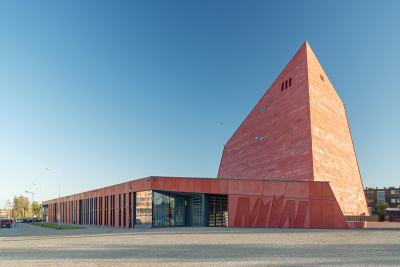 © Tomasz Kurek
© Tomasz Kurek
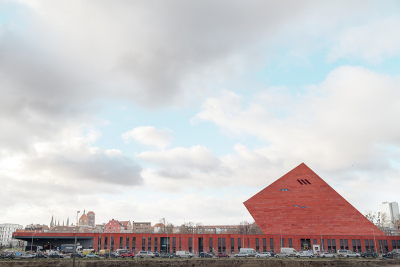 © Tomasz Kurek
© Tomasz Kurek
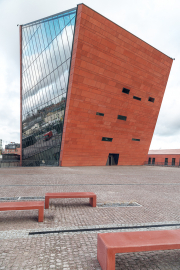 © Tomasz Kurek
© Tomasz Kurek
